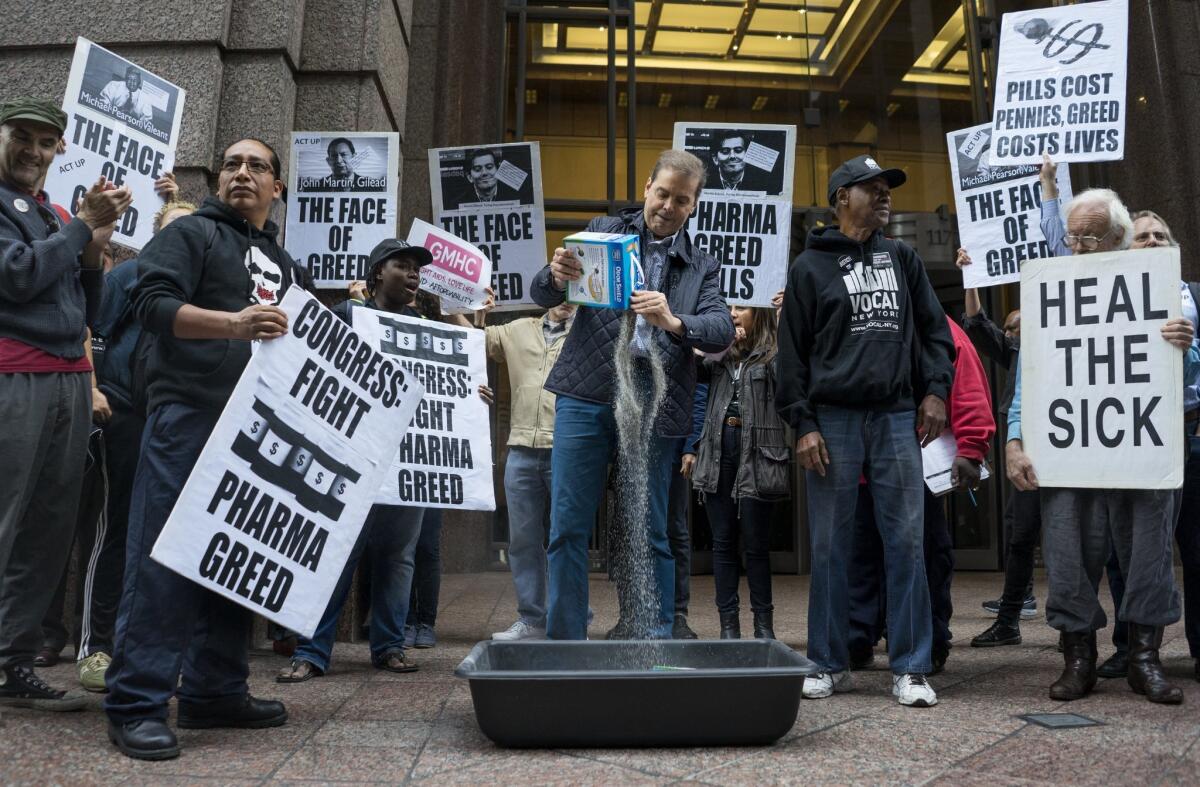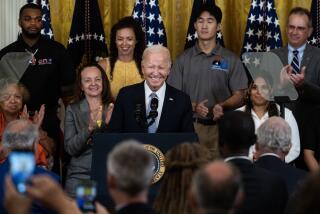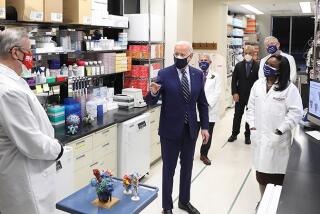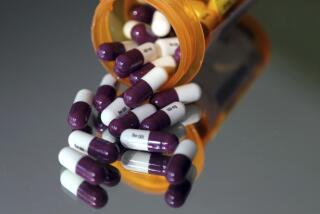Op-Ed: How taxpayers prop up Big Pharma, and how to cap that

An activist with the group Act Up pours cat litter on an image of Turing Pharmaceuticals CEO Martin Shkreli during a protest highlighting pharmaceutical drug pricing on Oct. 1 in New York.
When Martin Shkreli of Turing Pharmaceuticals raised the price for Daraprim by 5,455%, he put drug pricing on the agenda for the leading 2016 presidential candidates. Bernie Sanders is reported to have rejected Shkreli’s campaign donation, and Hillary Rodham Clinton came out with a plan to tackle spiraling costs. Even Donald Trump called Shkreli a spoiled brat.
Everyone knows that Americans pay high prices for drugs. But there is more to this story. The taxpayer not only shells out at the pharmacy but often plays a critical role in funding these drugs in the first place. In other words, the public pays twice.
The taxpayer not only shells out at the pharmacy but often plays a critical role in funding these drugs in the first place. In other words, the public pays twice.
Although the pharmaceutical industry justifies routine overcharging by pointing to the huge, and uncertain, costs of research, the truth is that the government historically took, and continues to take, the greatest risks.
Since the 1930s, the National Institutes of Health has invested close to $900 billion in the basic and applied research that formed both the pharmaceutical and biotechnology sectors, with private companies only getting seriously into the biotech game in the 1980s.
Big Pharma, while of course contributing to innovation, has increasingly decommitted itself from the high-risk side of research and development, often letting small biotech companies and the NIH do most of the hard work. Indeed, roughly 75% of so-called new molecular entities with priority rating (the most innovative drugs) trace their existence to NIH funding, while companies spend more on “me too” drugs (slight variations of existing ones.)
But if Big Pharma is not committed to research, what is it doing? First, it is well known that Big Pharma spends more on marketing than on R&D. Less well known is how much it also spends on making its shareholders rich. Pharmaceutical companies, which have become increasingly “financialized,” distribute profits to shareholders through dividends and share buybacks designed to boost stock prices and executive pay.
Take Pfizer. Economist William Lazonick has shown that from 2003 to 2012, it spent $59 billion on share buybacks and $63 billion on dividend payouts — for a total payout to shareholders of 146% of net income. All the while, Pfizer benefited immensely from U.S. government spending on life sciences research and drug development.
Rather than making patient, long-term investments, large shareholders in Big Pharma companies are looking for a quick, easy, guaranteed return.
As evidence that Big Pharma is spending less on research becomes irrefutable, the pharmaceutical industry has used other excuses to support high prices. It has, for instance, argued that prices are proportionate to the intrinsic value of the drugs.
“Price is the wrong discussion,” Gilead Sciences’ executive vice president, Gregg Alton, declared in response to criticism over the price of Sovaldi. “Value should be the subject.”
However, studies looking at cancer treatments have shown no correlation between the price of cancer drugs and the benefits they provide. Peter Bach, a renowned oncologist, has found that, for most drugs, a value-based cost is actually lower than the current market-based price.
This state of affairs is not simply a huge failure of the so-called free-market; it is a long con. The supposed partnership between public and private sectors is increasingly parasitic, hurting innovation and fueling inequality through reduced investment, exorbitant prices for consumers and more money siphoned off for shareholders.
Rather than the static debates about public versus private, what we need in the United States is a better deal between government and business. In exchange for the massive public investment, Big Pharma should be asked to reinvest profits back into R&D rather than giving such a high percentage to shareholders. Furthermore, given that most drugs originated thanks to public funds, the prices of these drugs should be capped to reflect the taxpayers’ contribution.
Unthinkable? Well, this power already exists. The 1980 Bayh-Dole Act allowed publicly funded research to be patented (to facilitate commercialization) and in return allowed for price caps. Yet successive administrations, worried about being seen to intervene in the free market, have never capped the price of even one drug.
But this is a flawed understanding of what the market is. The market is the outcome of both private and public investments, as well as policies that help shape that process. America’s economic success is due in no small part to an entrepreneurial state that has created and shaped new markets. Drug companies must acknowledge the role of the state — and the taxpayer — and act accordingly.
Mariana Mazzucato is a professor in Economics of Innovation at the University of Sussex and the author of “The Entrepreneurial State: Debunking Public vs. Private Sector Myths,” out in the U.S. on Tuesday.
Follow the Opinion section on Twitter @latimesopinion and Facebook
More to Read
A cure for the common opinion
Get thought-provoking perspectives with our weekly newsletter.
You may occasionally receive promotional content from the Los Angeles Times.






